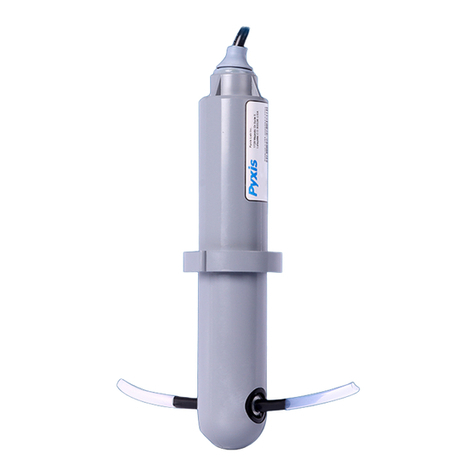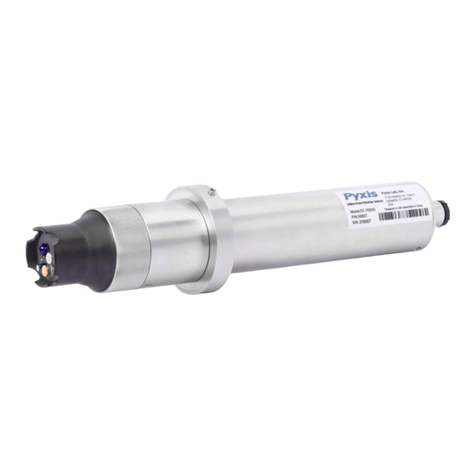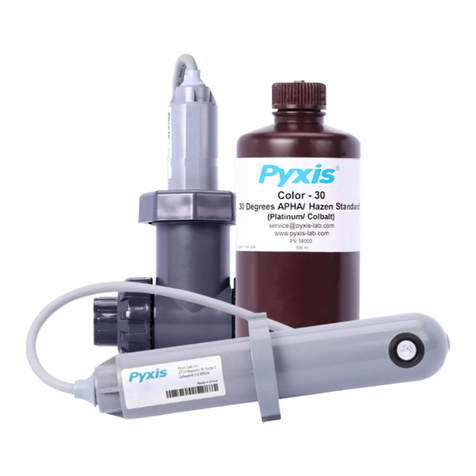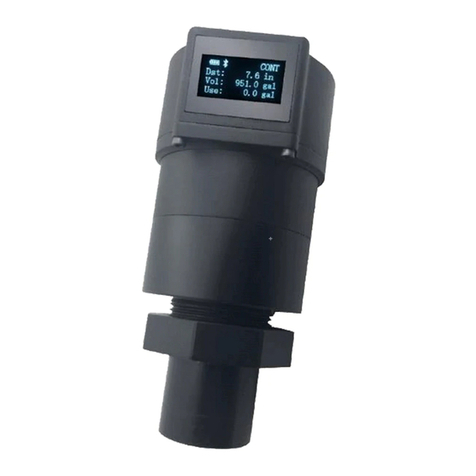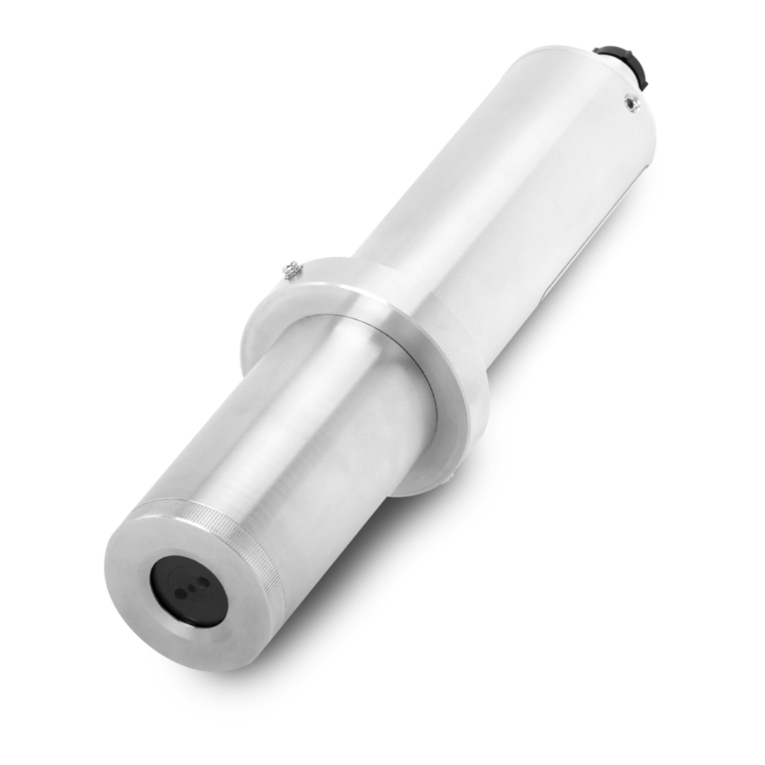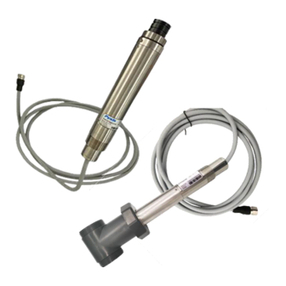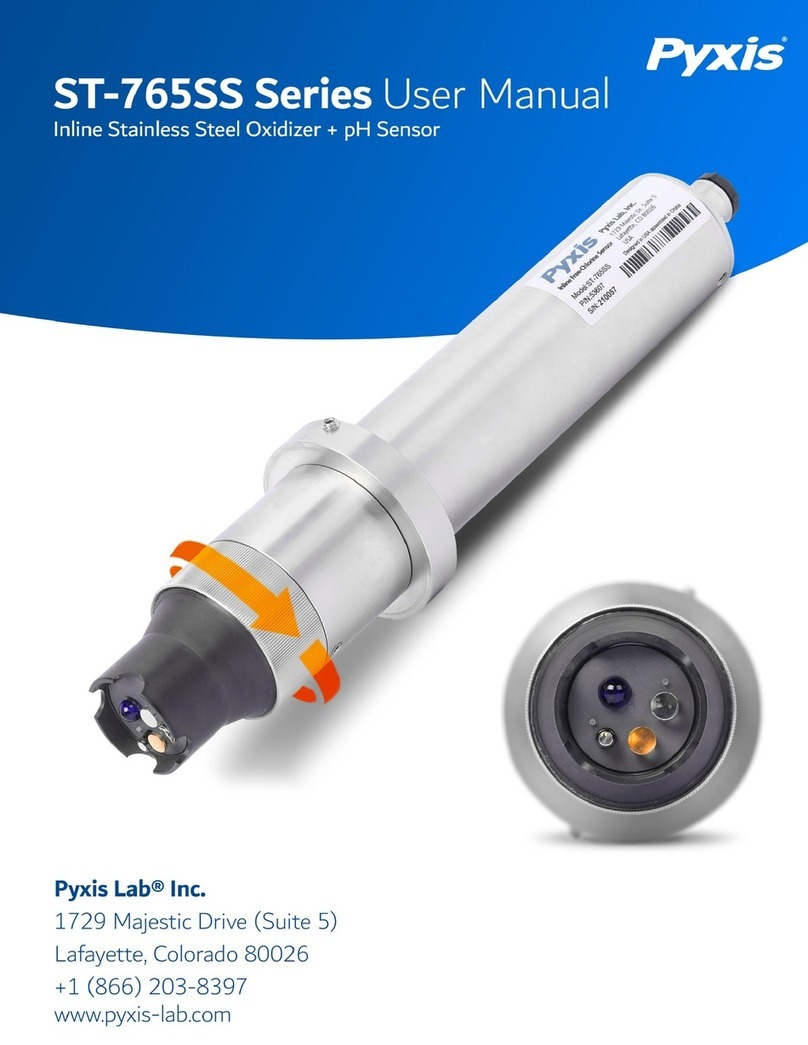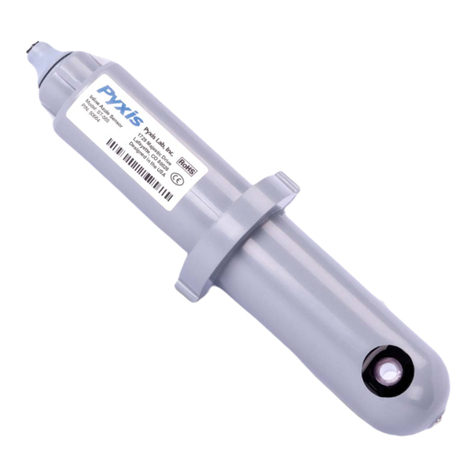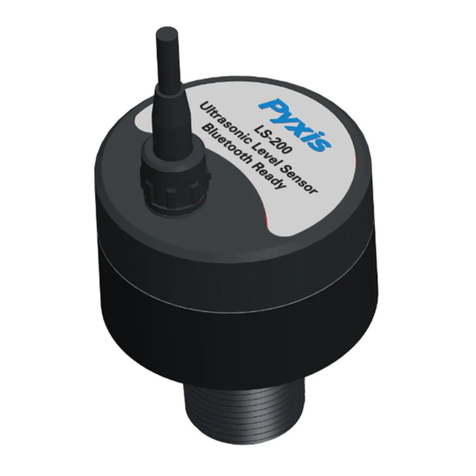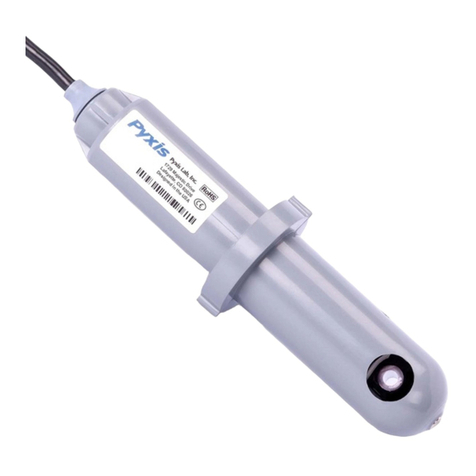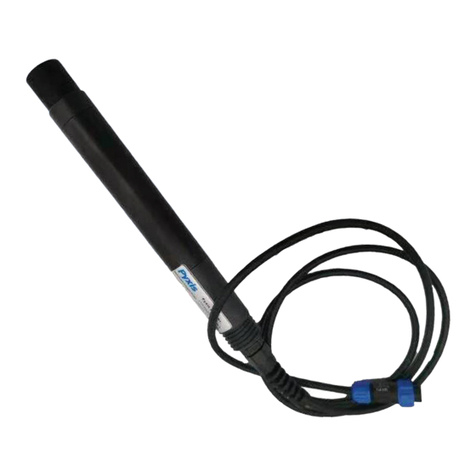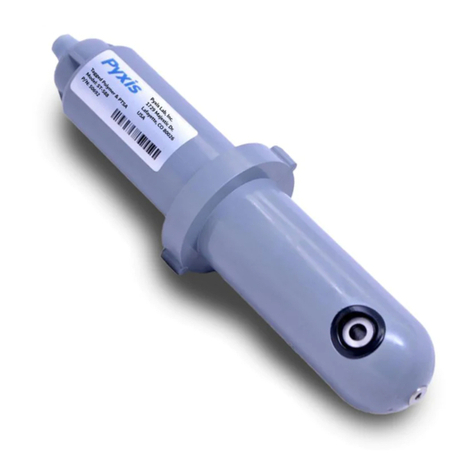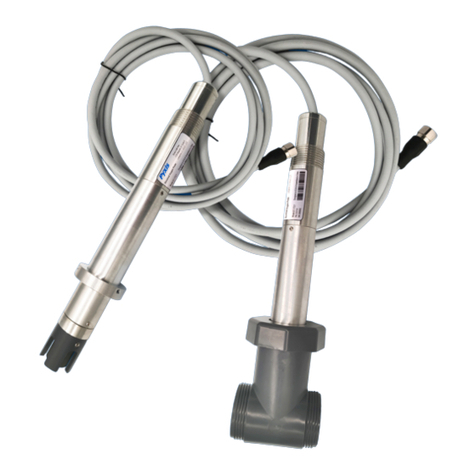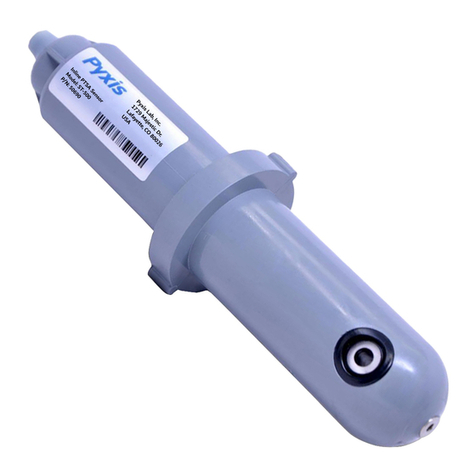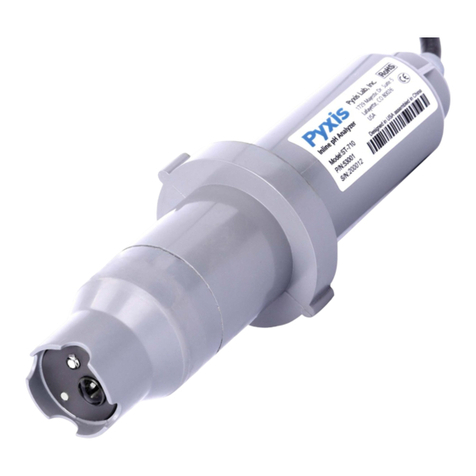
1 Introducon
The Pyxis CR Series corrosion sensor measures the metal corrosion rate in an aqueous environment based
on the principle of linear polarizaon resistance (LPR). A small polarizaon DC voltage is applied to two test
metal electrodes and the resulng current is measured by the sensor. The polarizaon resistance value is
calculated from the measured current and the applied polarizaon voltage. The metal corrosion rate in the
unit of thousandths of inch per year (or mils per year, MPY) is then determined as:
M P Y =B/Rp(1)
where Rpis the polarizaon resistance (LPR) and Bthe proporonal constant.
To calculate Rporiginated from the electrochemical reacon at the metal water interface, the CR Series
sensor subtracts the soluon resistance Rsdue to the test soluon conducvity from the total resistance
measured between the two test electrodes. The CR Series sensor accurately measures the test soluon
conducvity using the two test electrodes and the bipolar pulse technique, which has been successfully
used in other Pyxis conducvity sensors and handheld meters.
A challenge of using the LPR method to measure corrosion rate below 0.01 MPY is to measure electric
current in the range of pico- and nano-amperes. The CR Series sensor adapts a range of techniques that
are pracced in our uorometers where low pico-ampere current is measured. These techniques include
electromagnec interference shielding, special analog circuit designs, and digital signal processing. The
proporonal constant Bhas a theorecal value for a given metal type and size. The CR Series assumes B
equal to 1.24 MPY∙Ω for a 5 cm2mild steel electrode, which is a typical value that has been used in many
LPR corrosion researches. This proporonal constant may be also referred as to the alloy factor of the test
metal and normalized to 1.0 for the steel electrode for convenience. It can be adjusted by the user to ac-
count for variaons in a real applicaon environment.
To determine the corrosion situaon of real process equipment is not a simple maer. The corrosion rates
for various metal surfaces contacng aqueous uids in a process depends on many parameters, including
the corrosivity pertaining to the chemistry of the aqueous uid, physical parameters such as temperature
and the velocity of the uid, and the metallurgical composion of the process equipment itself. Because
of this, the corrosion rate measured by the CR Series sensor should not be used alone to predict or assess
the real corrosion rate of the process equipment. Nevertheless, the science of using the LPR technique to
quanfy the corrosion rate has been well established. The corrosion rate measured by the CR Series sensor
can be used to understand the corrosivity trend of the aqueous uid over a period and its correlaon to
changes in the process parameters.
Measuring corrosion rate using a weight loss corrosion coupon is sll widely pracced in many industry
applicaons. LPR is an instantaneous method compared with the corrosion coupon method. It can indi-
cate a change in corrosion rate in a me scale of a few minutes. In theory, a me-averaged corrosion rate
measured by the Pyxis LPR sensor should agree with that from the weight loss coupon method if both are
pracced according to the common pracces known in the industry. For monitoring mild steel corrosion
rate in an industrial cooling water system, one could also treat the LPR metal electrode itself as the weight
loss corrosion coupon and compare the corrosion rate calculated from the weight loss of the electrode to
the averaged LPR corrosion rate in order to calibrate the LPR corrosion rate by adjusng the alloy factor.
The electrochemical noise measurement has long been used to quanfy the localized corrosion or ping
corrosion rate. The CR Series sensor measures the short circuit electric current owing through the elec-
trodes between the two LPR measurements. The CR Series sensor rst applies a signal process algorithm
CR Series User Manual 2
